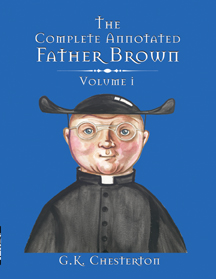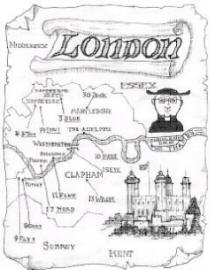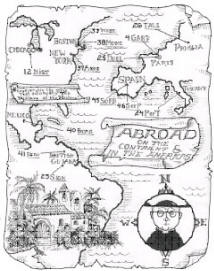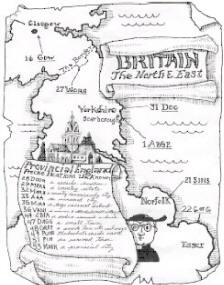



This two-volume set has the distinction of being the first complete edition of Father Brown stories. "Full" collections in the past have not included the complete series of the fifty-three Father Brown titles. For example, no previous "complete" edition has included "The Donnington Affair" or "The Mask of Midas." This edition is also unique in offering original commentaries on each of the stories. Earlier Father Brown criticism has treated the series as a whole, but has failed in most cases to consider the individual stories as separate works of detective fiction. Pasquale Accardo has much that is original to say about Chesterton's characters, about literary parallels, and about the ways in which a given story conforms to the logic and dictates of the detective story genre.
The Complete Annotated Father Brown also includes the most comprehensive notes of any Father Brown collection. John Peterson provides complete notes for stories that have never before been annotated, identifying hundreds of now obscure historical and literary allusions, tracing parallels between the stories and Chesterton's other writings, and referring the reader to relevant passages in the works of other commentators.
This is also the first of the "complete" editions to be fully illustrated. The publisher has sought out, collected, and organized the oldest and best of the Father Brown illustrations from the earliest interpretations of the character to be found in magazines of the period and from the original book-length story collections. Furthermore, artist Laurie Fraser Manifold has contributed new and original illustrations for a number of the stories in this new edition.
A final unique feature of this edition is that the stories are arranged according to the chronology of Father Brown's detective career (as implied by events, topical references, and other evidence in the stories). Reading the stories in this order provides a kind of biography of Father Brown while not detracting in the least from the individual excellence of the separate tales.
The Complete Annotated Father Brown (Chesterton) 2 Volumes,. Hard-Cover 750p.
ISBN 1-5246-390-7 $180.00
About Father Brown
G.K. Chesterton (1874–1936) was considered by his peers in the mystery-writers' fraternity to have been the father of the "whodunit," or classic British mystery, the kind of detective story that held sway through the nineteen twenties and thirties—the golden age of Hercule Poirot, Lord Peter Wimsey, and Ellery Queen. Father Brown's spirit dominated detective fiction until the American pulp magazines broke the mold with their tough-guy private eyes.
The figure of Sherlock Holmes dominated the landscape when Chesterton first introduced Father Brown. The excellence of the Holmes stories had led detective story writers into a cul-de-sac of imitation. Chesterton came to the rescue in 1911—when the first Father Brown stories were published as The Innocence of Father Brown.
Father Brown is as commonplace a figure as possible and a far cry from the theatrical Holmes. The priest is a short little man with a moon face and blinking, owlish eyes. Chesterton never has him confront a den of thieves or an international conspiracy, for these stories are cozy domestic dramas—limited in time, location, and cast of characters—in which people murder their dear friends, rob their business partners, and blackmail their next of kin. Their motives are the all too familiar human vices of greed, jealousy, pride, hatred, and fear.
Like other fictional detectives, Father Brown is a keen observer and a sound logician. But the real secret of the priest's success is his practical knowledge of human motivation and moral choice. Unlike his rivals, Father Brown solves his cases through a profound understanding of the realities of human wickedness.
Chesterton's influence on succeeding generations of mystery writers cannot be exaggerated. He brought motive and character back into prominence and freed the detective story from the domination of inferior imitators of Arthur Conan Doyle. Influence aside, however, his stories continue to be read for their ingenious plots, lively characters, and unique moral reasoning, which is if anything more relevant in our day than in his.


Gilbert Keith Chesterton was born in London on May 29, 1874. He was schooled at St. Paul's and went on to study art at the Slade School. He did not take a degree.
After leaving the Slade, Chesterton worked at low-level jobs in publishing before finding regular work as a freelance journalist, principally with The Bookman as an art critic and with The Speaker, as a literary critic. He gained some notoriety at this time through his opposition to the Boer War, which occasioned his alliance with his lifelong partner in controversy, Hilaire Belloc. On June 18, 1901, Chesterton married his fiancÚ and one true love, Frances Blogg. In the following year he was assigned a regular weekly column of opinion for London's Daily News. In 1905 he began the weekly Illustrated London News column that he would author for thirty years.
Chesterton fell into a coma and life-threatening illness in 1914. He recovered slowly while supporting the British war effort with his pen. When his brother Cecil Chesterton enlisted in 1916, Gilbert took over Cecil's weekly paper, The New Witness. Cecil died overseas in 1918 in a French military hospital. In 1925 Gilbert reorganized Cecil's newspaper as G.K.'s Weekly, which he continued to publish until his death. In 1918, Chesterton began a series of books about his foreign travel, notably to Ireland, North America, Jerusalem, and Rome.
In 1922, at the age of forty-eight, after many years of explaining and defending Catholicism, Chesterton was himself received into the Roman Catholic Church. Chesterton's published output included a torrent of essays and books, poetry and light verse, detective stories, and plays. In his day he was also admired as a lecturer and debater, an illustrator, and a popular BBC radio personality. His associates remembered him for his engaging personality, his kindliness, his absent-mindedness, his prodigious memory, and his immense girth. He thought of himself as nothing more than a "jolly journalist." He died June 14, 1936, in Beaconsfield, the London suburb where he and Frances had resided since 1909.


Other Books by the Pasquale Accardo: